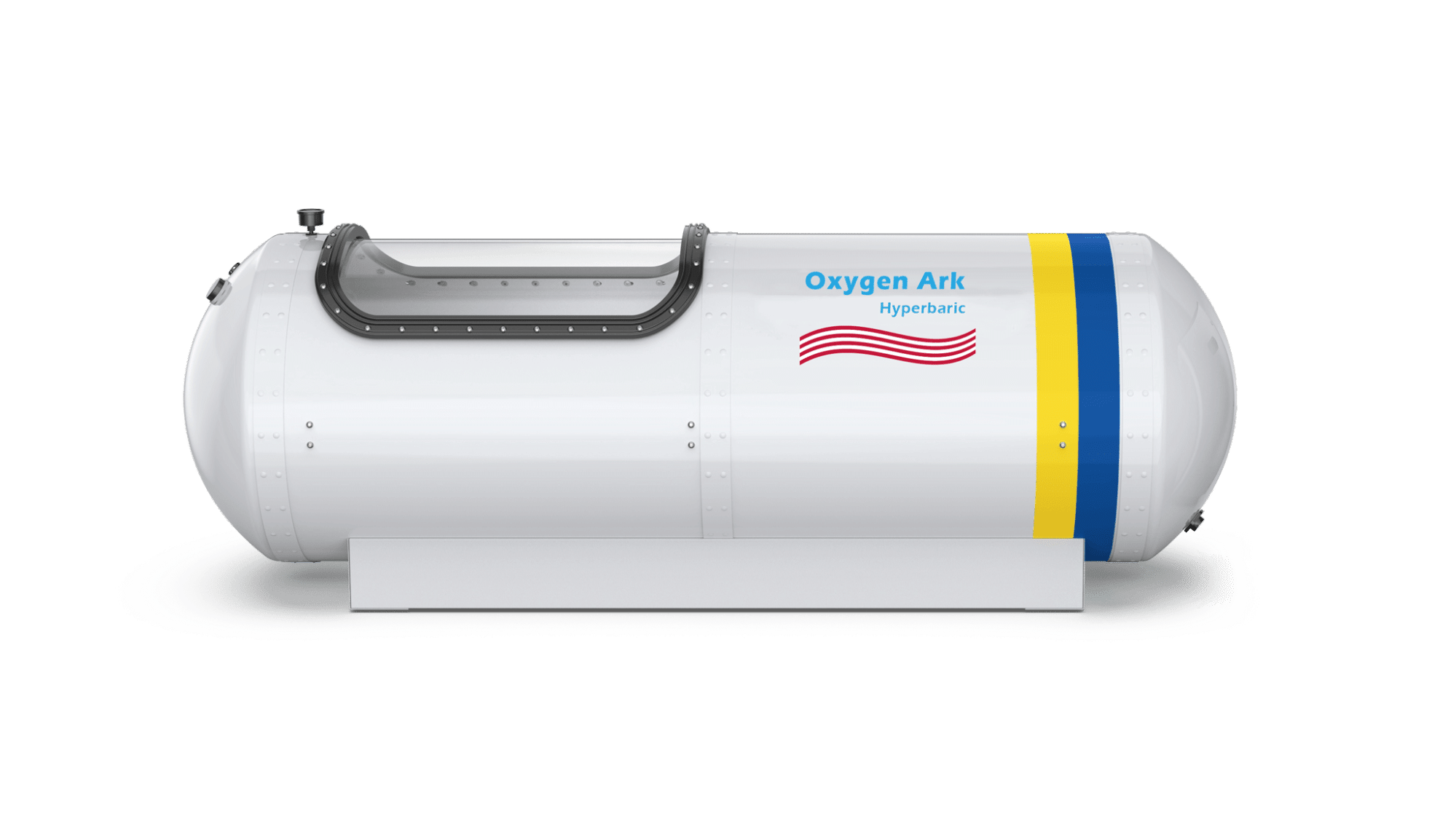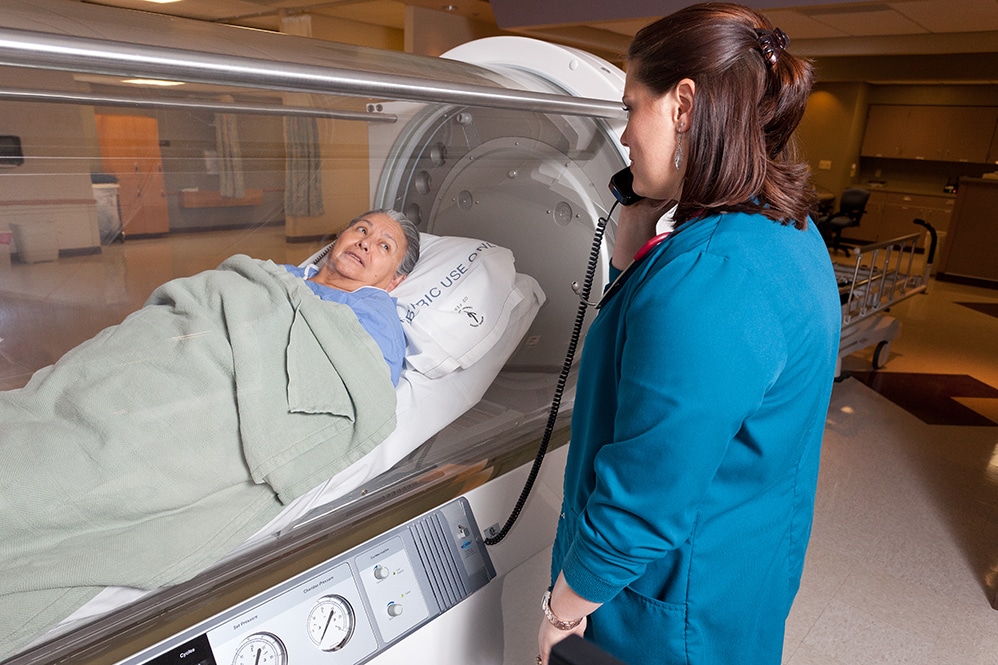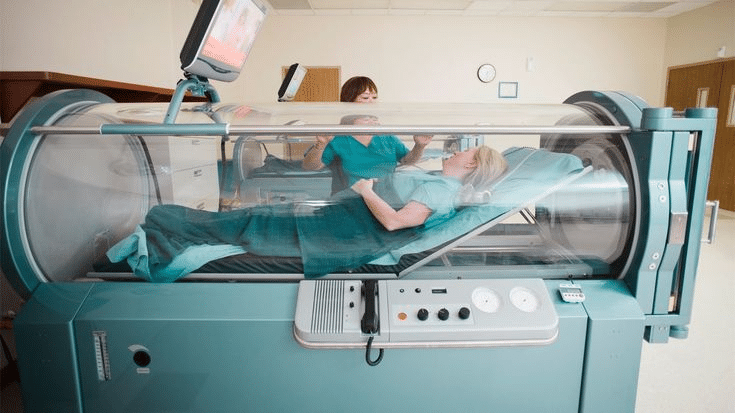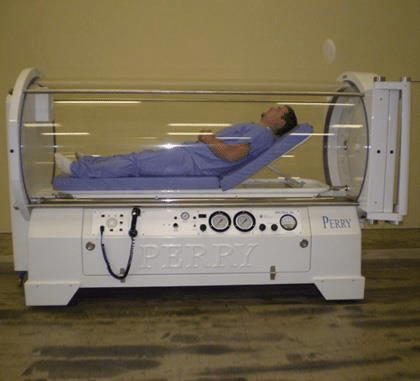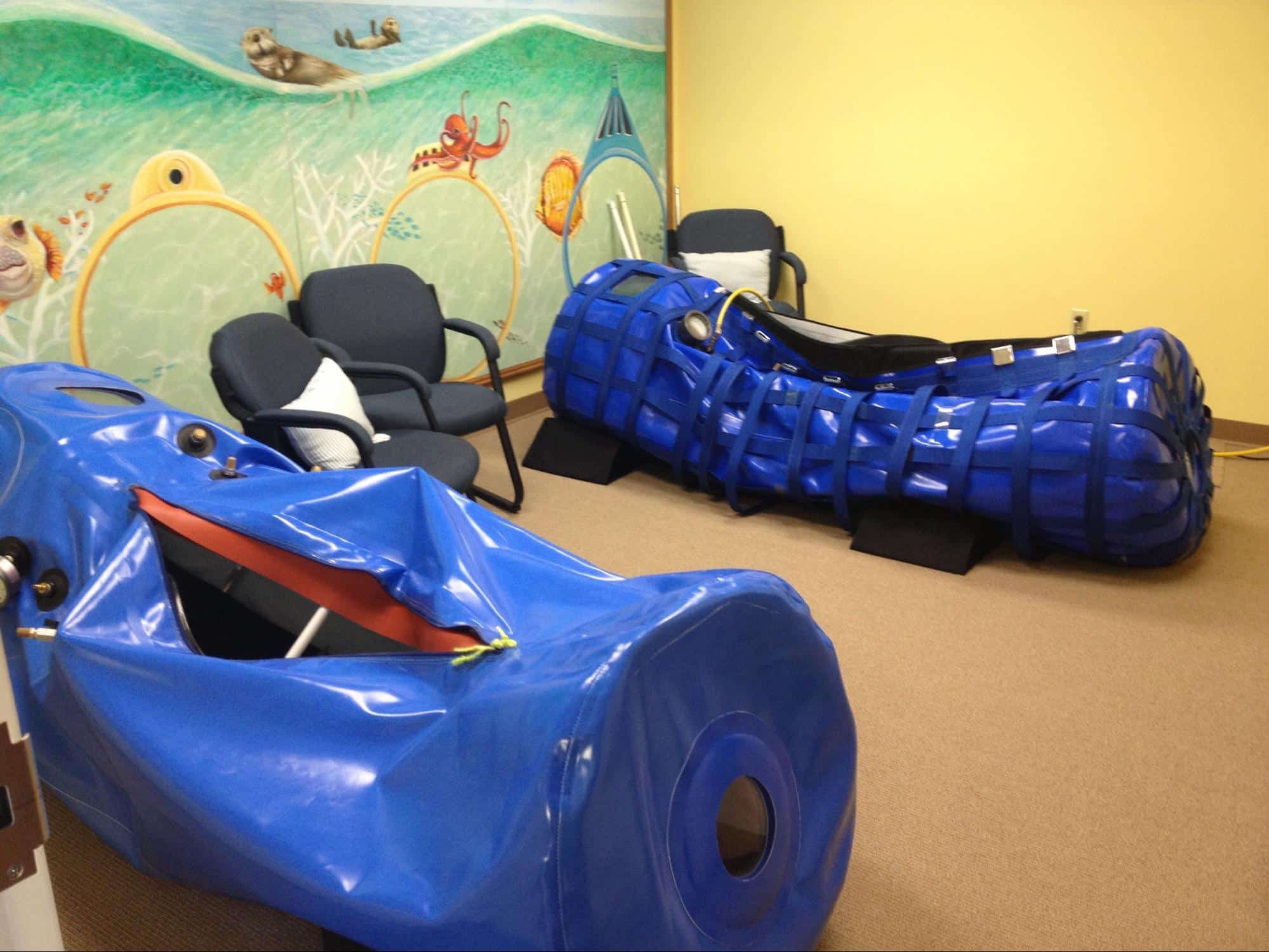Treatment of stroke with a hyperbaric oxygen chamber is not new, and the research is gradually gaining ground. With other medicines, stroke patients can recover quickly from this ailment. Learn the benefits it offers and more in this article.

Image Source: Mayo
Stroke is a prevalent cause of death and disability worldwide. It occurs when blood flow to the brain is interrupted, damaging brain cells. Traditional stroke treatments include medication and rehabilitation, but hyperbaric oxygen therapy (HBOT) is a new and promising approach.
HBOT is combined with rehabilitation exercises and other procedures to treat stroke. This blog post intends to explore the benefits, costs, and side effects of hyperbaric oxygen therapy for stroke patients.
What is Hyperbaric Oxygen Treatment for Strokes?
Hyperbaric Oxygen Treatment: Explained
Hyperbaric oxygen therapy (HBOT) is a medical procedure where an individual inhales pure oxygen in a pressurized chamber, heightening the amount of oxygen in the bloodstream and facilitating the healing process. A hyperbaric chamber is a medical device that delivers pure oxygen to the patient in a pressurized environment.
Is a Hyperbaric Chamber Good for Stroke?
The hyperbaric chamber for stroke patients may help recover their movement, improve faulty memory, and treat other secondary effects of stroke.
Hyperbaric Oxygen Treatment for Stroke Patients: Benefits
Hyperbaric oxygen therapy can improve blood flow to the brain and reduce inflammation, leading to better stroke recovery outcomes. It has improved neurological function and quality of life in stroke patients.
Hyperbaric Oxygen Treatment for Stroke Patients: Process
Hyperbaric oxygen treatment for stroke patients involves sessions in a hyperbaric chamber, typically lasting between 60-90 minutes. Patients may undergo multiple sessions for several weeks.
HBOT for Stroke Patients: Comparison with Other Therapies
While hyperbaric oxygen therapy is a promising treatment for stroke patients, it is not a substitute for traditional treatments such as medication and rehabilitation.
Although hyperbaric oxygen therapy can improve neurological function and quality of life in stroke patients, it is not a cure for stroke and does not replace traditional stroke treatments. Medication and rehabilitation is still the best treatment for stroke patients and should not be wholly replaced with HBOT.
Stroke Success Stories Using Hyperbaric Treatment
There have been several successful case studies of stroke patients who received hyperbaric oxygen therapy. Studies have shown that HBOT can improve stroke patients’ neurological function and quality of life.
Many stroke patients with hyperbaric oxygen therapy report improved neurological function and quality of life.
Hyperbaric Oxygen Therapy: A New Look on Treating Stroke and Traumatic Brain Injury
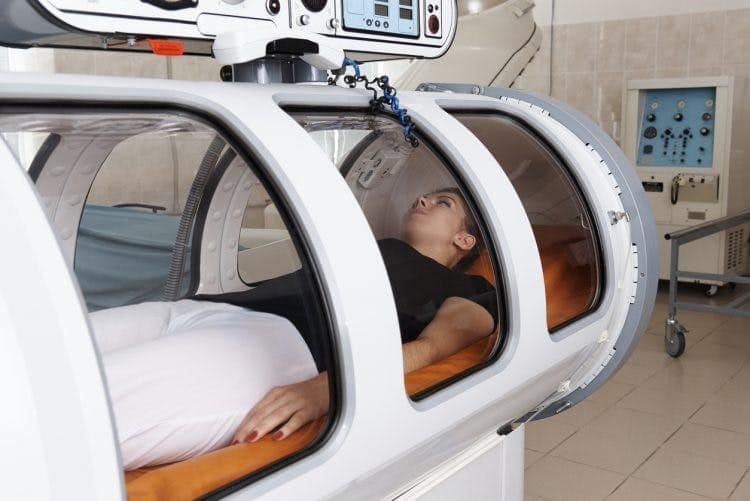
Image Source: Flint
An external force, like a blow to the head, causes traumatic brain injury. Studies have shown that HBOT can assist the body with neuroprotection in the brain while improving the quality of life in patients with traumatic brain injury.
Hyperbaric oxygen therapy can promote healing and improve neurological function in patients with traumatic brain injury.
Hyperbaric Chamber for Hemorrhagic Stroke
Hemorrhagic Stroke: Explained
Hemorrhagic stroke is typically caused by bleeding in the brain. It is less common than ischemic stroke, but it is usually more severe and can be life-threatening. Hemorrhagic stroke can be caused by a ruptured blood vessel or an abnormal tangle of blood vessels called an arteriovenous malformation (AVM).
Hyperbaric Chamber for Hemorrhagic Stroke Patients: Benefits
Hyperbaric oxygen therapy (HBOT) has been studied as a potential treatment for hemorrhagic stroke. The procedure involves breathing pure oxygen in a pressurized chamber, which can increase the amount of oxygen delivered to the brain. This may help reduce swelling and promote healing.
However, the evidence for HBOT in treating hemorrhagic stroke is limited, and more research is needed to determine its effectiveness.
Hemorrhagic Stroke Patients: Comparison with Other Therapies
Other treatments for hemorrhagic stroke include;
- Surgery to remove the blood clot or repair the ruptured blood vessel.
- Medications to control blood pressure and prevent further bleeding, and
- Rehabilitation to help patients recover and function after the stroke.
However, the treatment choice depends on the individual patient’s condition and the location and severity of the bleeding. HBOT may be considered a complementary therapy to these treatments, but it is not currently recommended as a primary treatment for hemorrhagic stroke.
Hyperbaric Oxygen Therapy Cost
Hyperbaric oxygen therapy can be expensive due to the specialized equipment and medical personnel required to administer it. The cost can vary depending on a number of factors.
Factors Affecting the Cost of HBOT
Factors that can affect the cost of hyperbaric oxygen therapy include;
- The location and type of facility where the treatment is administered
- Length of the treatment session
- The number of sessions required, and
- Whether the treatment is covered by insurance.
What is the Average Cost of HBOT?
The average cost of hyperbaric oxygen therapy can range from $250 to $800 per session. The total cost of treatment can vary widely depending on the number of sessions required, but it can quickly add up to thousands of dollars. Insurance coverage for hyperbaric oxygen therapy can also vary, so it is essential to check with your insurance provider to see if they cover the cost of the treatment.
Should Stroke Patients Be Given Oxygen?
Should you give oxygen to stroke patients? There is a common misconception that oxygen is not given to stroke patients, but this is not true. Oxygen is often given to stroke patients to help increase oxygen levels in the brain and prevent further damage.
Benefits of Giving Oxygen to Stroke Patients
Giving oxygen to stroke patients can help improve brain function and prevent further damage to brain tissue. Oxygenark chamber therapy can also help reduce the risk of secondary complications such as pneumonia.
Hyperbaric Oxygen Therapy for Stroke Condition: A Systematic Review of the Evidence
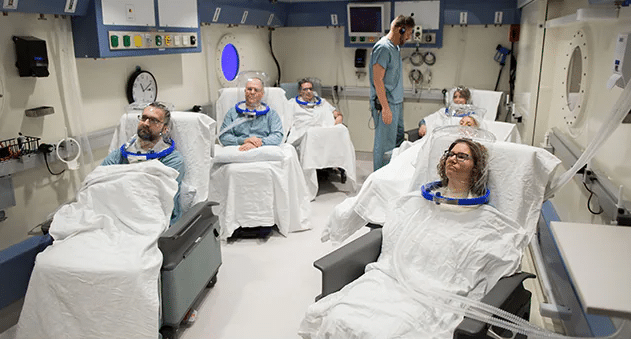
Image Source: Mayo Clinic
Systematic Review: Overview
The systematic review aimed to assess the effectiveness of hyperbaric oxygen therapy (HBOT) as a treatment for stroke by analyzing multiple studies on the topic. The studies included in the review were randomized controlled trials and observational studies investigating the use of HBOT in patients with stroke.
Systematic Review: Result
The systematic review found that there is not enough substantial evidence to support the use of HBOT as a standard treatment for stroke. However, some studies suggest that HBOT may benefit certain types of stroke, such as ischemic stroke, when combined with other therapies.
Systematic Review for Stroke Patients: Implications
Although HBOT is not currently recommended as a standard treatment for stroke, the systematic review results suggest that it may have potential as an adjunctive therapy in some instances.
Patients with stroke should discuss their treatment options with their healthcare provider and consider the potential risks and benefits of HBOT before deciding. Extensive research is needed to determine the optimal dosage and duration of treatment and its safety and effectiveness in different types of stroke.
Hyperbaric Oxygen Therapy: Side Effects
Hyperbaric oxygen therapy is generally considered safe, but it may have side effects like any medical treatment. Side effects can range from mild to severe and vary depending on the individual and the treatment conditions.
Mild/Common Sides Effects
Common side effects of hyperbaric oxygen therapy include;
- Ear discomfort or pain is similar to being in an airplane during takeoff or landing. This is due to changes in pressure in the middle ear.
- Fatigue, lightheadedness, and temporary vision changes.
Serious Side Effects
Serious side effects of hyperbaric oxygen therapy are rare, but they can occur. These may include;
- Oxygen toxicity can cause seizures or lung damage.
- Barotrauma can cause damage to the lungs, ears, or sinuses due to changes in pressure.
Hyperbaric oxygen therapy can cause a fire in rare cases if a spark ignites the oxygen-rich environment inside the chamber. It is crucial to note that hyperbaric oxygen therapy is typically only recommended when the potential benefits outweigh the risks.
As a healthcare provider, discuss potential risks with your patient before treatment.
Finding Hyperbaric Chamber for Stroke Patients Locations
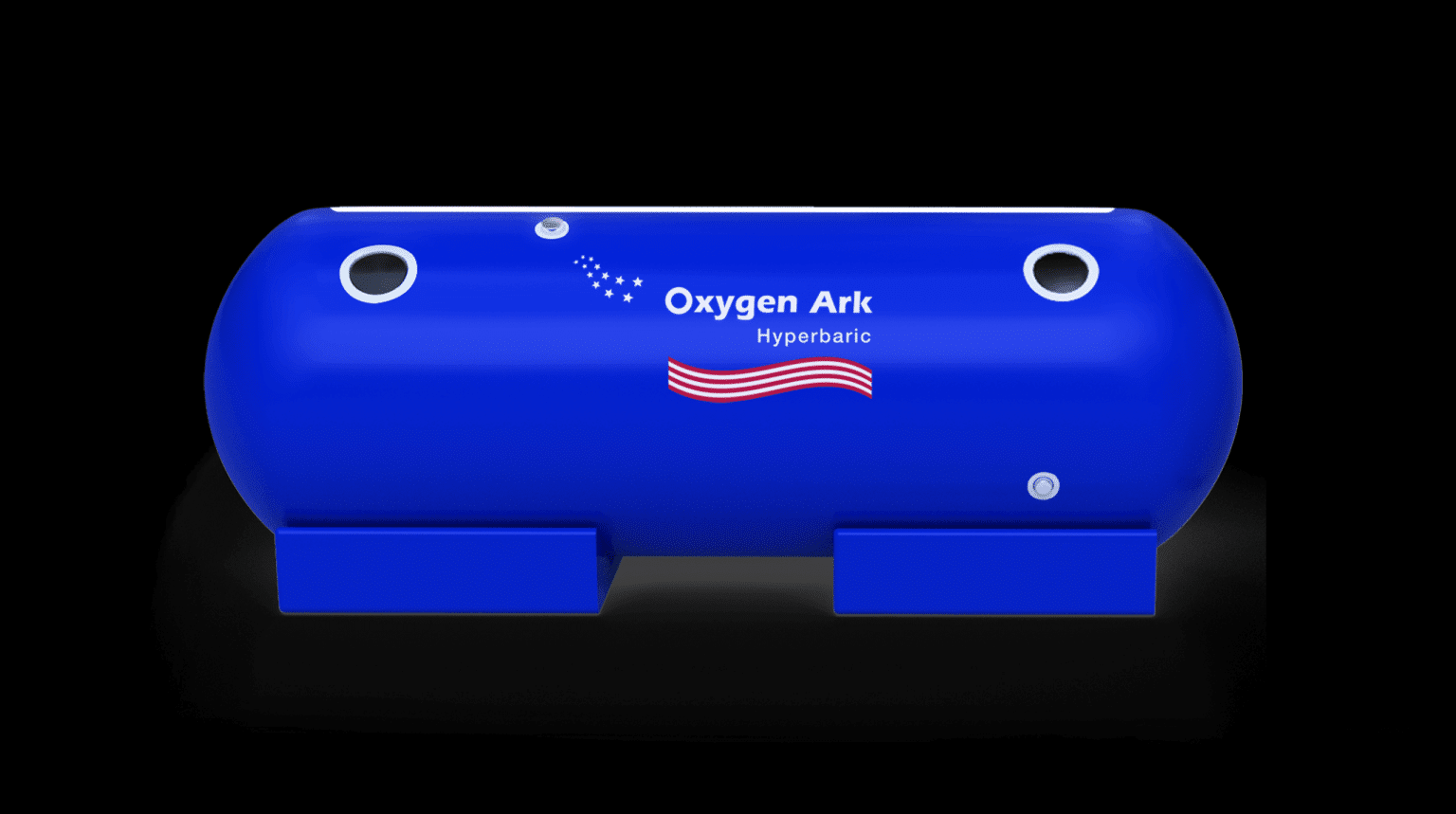
Image Source: oxygenark.com
Locating a Hyperbaric Chamber for Stroke Patients: Tips for Finding One Near You
If you or a loved one has had a stroke and you are considering hyperbaric oxygen therapy (HBOT), finding a hyperbaric chamber suitable for stroke patients is essential. Outlined below are some tips to help you locate a hyperbaric chamber near you:
- Consult with your doctor: Your doctor can help you identify the best hyperbaric chamber facility near you that specializes in treating stroke patients.
- Research online: You can search for hyperbaric chambers that offer HBOT for stroke patients in your area. Many facilities have websites listing their services, including hyperbaric oxygen therapy.
- Ask for recommendations: Ask family members, friends, and support groups for guidance on hyperbaric chambers that have experience treating stroke patients.
- Check with insurance providers: Contact your insurance provider to see if they cover hyperbaric oxygen therapy and which facilities in your area they recommend.
Hyperbaric Chamber for Stroke Patients: Finding the Right Medical Facility
If you are a medical facility looking to provide hyperbaric oxygen therapy to stroke patients, it is vital to find a suitable facility. Here are some things to consider when selecting a hyperbaric chamber for stroke patients:
- Experience and expertise: Look for a facility with experience treating stroke patients with hyperbaric oxygen therapy. The staff should be trained and experienced in the use of hyperbaric chambers.
- Safety protocols: Hyperbaric oxygen therapy can be risky if not administered correctly. Ensure that the facility has strict safety protocols to ensure patient safety.
- Availability of equipment: Ensure the facility has adequate hyperbaric chambers and is well-maintained.
- Accessibility: Choose a facility that is easily accessible to stroke patients and has adequate parking facilities.
Popular Stroke Patient Hyperbaric Chamber Locations Around the World
Here are some popular hyperbaric chamber locations for stroke patients around the world:
- China – Oxygenark
- United States – Mayo Clinic, Hyperbaric Medical Solutions, Atlanta Hyperbaric Center
- United Kingdom – The Hyperbaric Oxygen Therapy Centre
- Canada – Toronto Hyperbaric Medicine Clinic
- Australia – Sydney Hyperbaric Centre, Perth Hyperbaric Therapy
These facilities have experience treating stroke patients with hyperbaric oxygen therapy and are equipped with state-of-the-art equipment and experienced staff.
Conclusion
Hyperbaric oxygen therapy is a promising treatment for stroke patients. It delivers pure oxygen to the patient in a pressurized chamber, improving blood flow and reducing brain inflammation. However, more research is necessary to fully understand the benefits and limitations of hyperbaric oxygen therapy for stroke patients.

